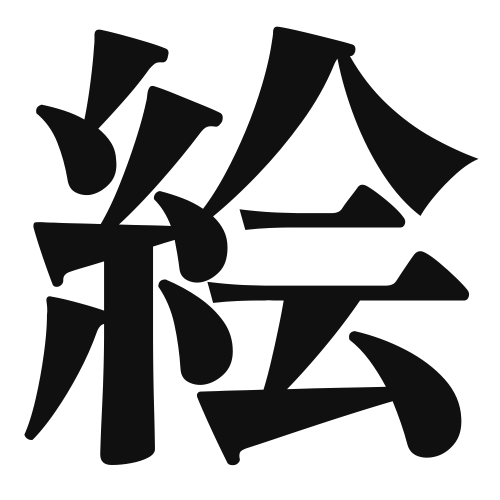1. Overview of Meaning
The kanji “絵” (pronounced “e”) means “picture” or “drawing.” It refers to visual representations created through various artistic methods, including painting and illustration.
2. Formation and Radicals
The kanji “絵” is a compound character, formed by combining the radical “糸” (meaning “thread”) and the character “会” (meaning “to meet” or “to assemble”). This combination suggests the idea of threads coming together to create an image.
The radical “糸” indicates that the character is related to textiles or threads, which is fitting since many traditional artworks involve fabric or weaving techniques.
3. Examples of Usage
Common words and phrases that include “絵” are:
- 絵画 (かいが, kaiga) – painting
- 絵本 (えほん, ehon) – picture book
- 絵師 (えし, eshi) – painter or illustrator
Example sentences in daily conversation:
- この絵はとても美しいです。 (このえはとてもびじんです。) – This picture is very beautiful.
- 子供に絵本を読んであげました。 (こどもにえほんをよんであげました。) – I read a picture book to the child.
4. Synonyms and Antonyms
Similar kanji with related meanings include:
- 画 (が, ga) – This kanji also means “picture” or “drawing,” but it often refers to more formal or technical artworks, such as paintings or illustrations.
Antonyms include:
- 無 (む, mu) – meaning “nothing” or “absence,” which contrasts with the idea of a picture representing something visually.
5. Cultural and Historical Background
The kanji “絵” is deeply connected to Japanese culture, where art and aesthetics play a significant role. Traditional Japanese paintings, such as ukiyo-e, are celebrated for their beauty and craftsmanship.
Proverbs and idiomatic expressions related to “絵” include:
- 絵に描いた餅 (えにかいたもち, e ni kaita mochi) – Literally “a rice cake drawn in a picture,” meaning something that looks good but is unattainable or unrealistic.
